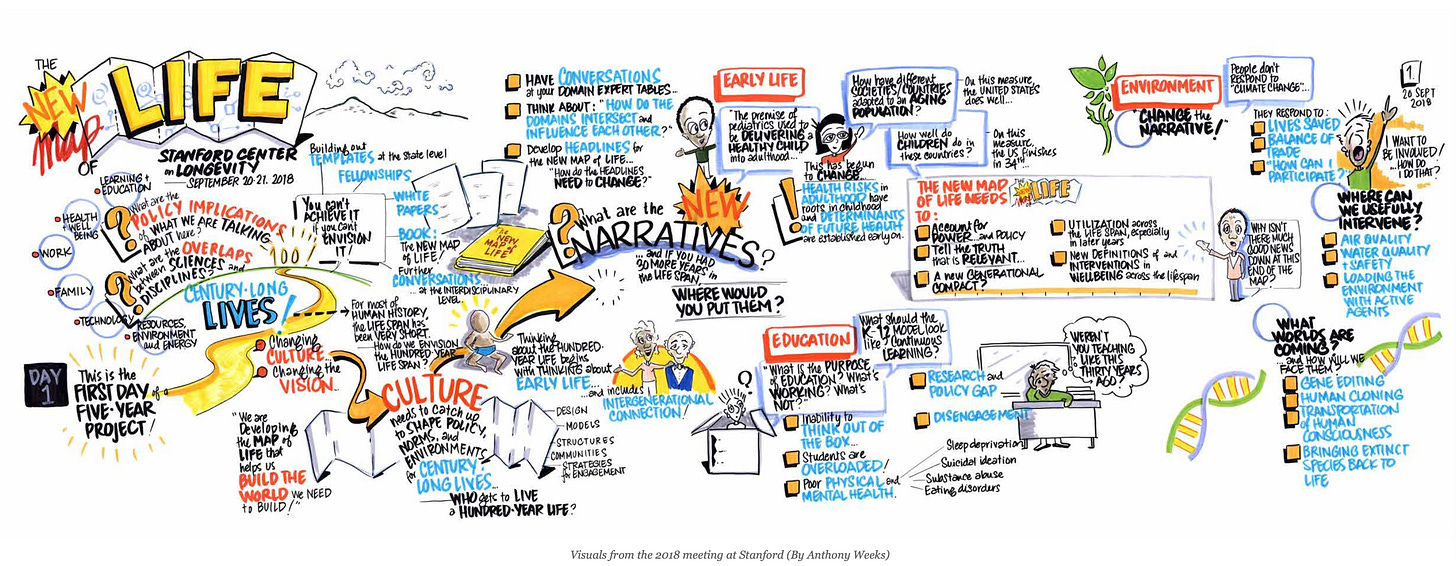What would you do differently today if you knew you’d live at least until 100?
According to Stanford Center on Longevity and Pew research, by 2054 the number of U.S. centenarians is projected to quadruple, reaching 422,000. If I make the list of those 0.1%, I’ll have another 30 or so productive years.
But are we ready for this?
At first, this idea of another life ahead of me is very relieving and captivating. Traditional expectations around life stages, associated roles, and timing of choices (in education, career, relationship, personal finance, etc.) felt very limiting to me. “The second life” would mean I’ll have more chances and time to explore and try different things and avenues of life.
But the idea of living beyond 100 can also be quite terrifying. Many questions arise.
How can I make sure that I’ll be in good health so that I can live those years to the fullest?
How can I sustain this lifespan financially?
How can I make sure my education and skill set are relevant?
How can I maintain a sense of purpose and meaning?
There aren’t clear answers to these - yet. Current social institutions, norms, and policies are shaped by life with much shorter life expectancy.
Exploring these themes, I joined the Stanford Center on Longevity (SCL) Ambassador program. The goal of the program is to spread awareness around longevity issues and support the SCL mission to shape individual, community, and societal choices to support 100-year lives. At the heart of the program is “The New Map of Life” initiative, a blueprint that envisions the centenarians’ future.
Here are a few insights that I would like to share today.
Longevity dividends need to be distributed across all life stages. Longevity benefits aren’t just about extending retirement. It involves adjusting milestones and roles within each stage of life, even redefining them. Children might afford more time to play and explore; young adults may have more time to study and experiment with careers and gap years. Earning a diploma by the mid-20s to achieve success over a 100-year lifespan may not be the most optimal path. In your thirties, you are probably just starting to shape your professional career and will pivot many times.
Aging is more an opportunity than a risk. By 2034, there will be more adults aged 65+ than children under 18 in the U.S. A single child will engage closely with six adults spanning two generations or even 14 adults across three generations. Imagine the opportunities for education and upbringing in such intergenerational connections. Imagine new professional opportunities for adults 65+, especially in a future where AI handles most non-creative tasks, leaving room for wisdom and experience to shine.
Aging is a feature, not a bug. There are age biases that older adults are less sharp and efficient than younger peers. But SCL emphasizes that this simply isn’t true. In fact, age-diverse teams are more productive and efficient, thanks to many factors, including emotional intelligence and maturity that come with experience.
Together with 15 global ambassadors, I’m thrilled to share more insights in the coming months. Longevity science isn’t about the old age—it’s about the entire life course, and I think it is important to be prepared early.
Please subscribe not to miss new insights.




